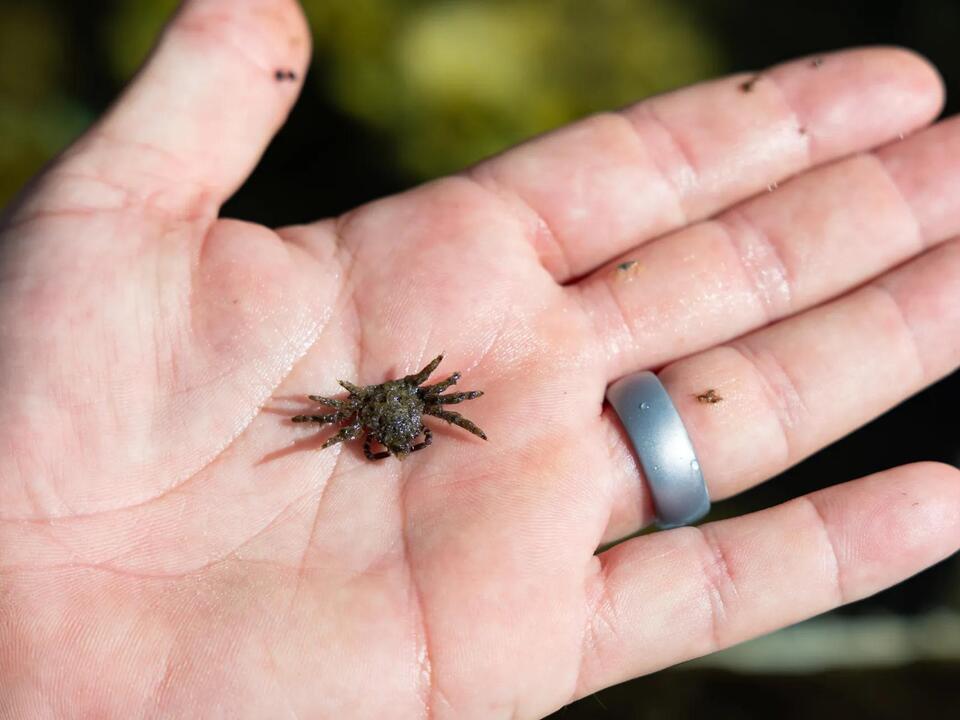Not all heroes wear capes. Some are crabs.
With giant pincers and rough, spider-like legs, Caribbean king crabs don’t look like your typical heroes. Yet these crustaceans may be key to solving one of the world’s most pressing environmental problems: the decline of coral reefs.
In recent decades, warming seas, diseases, and other threats have wiped out half of the world’s corals and 90 percent of those in Florida. And this past summer, the problem accelerated. A devastating heat wave struck the Caribbean, pushing the reef in the Florida Keys — the largest in the continental US — closer to the brink of collapse.
This is the third story in a Vox series about the bleaching crisis in Florida. The series is supported by a grant from the Pulitzer Center.
Read the other stories in this series:
America’s most iconic coral reef is dying. Only one thing will save it.
Devastating photos reveal how an extreme heat wave is wrecking Florida’s coral reef.
The decline of coral reefs is an enormous problem for wildlife and human communities. Reefs not only provide habitat for as much as a quarter of all marine life, including commercial fish, but they also help safeguard coastal communities during severe storms. Simply put, we need coral reefs.
Coral reefs, meanwhile, need crabs.
Lucky for them, help is on the way. Scientists are in the process of building a crab army — hundreds of thousands of crustaceans strong — that they’ll unleash on Florida’s reefs, giving this ailing ecosystem a tool to fight back.
Crabs to the rescue
If you find crustaceans icky, Jason Spadaro’s lab is not a place you want to visit. Housed in a large, hurricane-proof building on Summerland Key in the Florida Keys, it’s full of tanks that are full of crabs — dozens of them. Some are the size of fingernails; others are as large as dinner plates. They all look a bit like rocks.
Spadaro, a crab enthusiast and marine ecologist at the Mote Marine Laboratory and Aquarium, is heading up an ambitious plan: to breed a quarter of a million Caribbean king crabs each year. It’s not about cultivating seafood, though these crabs are indeed delicious, Spadaro said. It’s about helping coral reefs survive.
The key is in the crabs’ diets: These critters consume enormous quantities of seaweed, also known as macro algae. Algae has been choking reefs throughout the world and especially in Florida, making it hard for them to grow and recover from damaging events like marine heat waves.

Algae harms coral. Crabs eat algae.
Algae is one of the few winners in a world dominated by humans. It thrives on our waste, such as sewage and runoff from farmland, which is full of nitrogen and phosphorous — nutrients that algae need to grow.
As pollution runs into the ocean, algae booms.
Meanwhile, animals that eat algae have declined precipitously in recent decades. In the 1980s, an unknown pathogen wiped out longspined sea urchins in the Caribbean. These marine invertebrates — which take the shape of an overfilled pin cushion — eat loads of algae. Similarly, overfishing and the loss of various ecosystems has caused declines in algae-eating fish, such as parrotfish.
Like a fertilized pasture with no cows, a field of algae on a reef with no herbivores grows unencumbered. In the last decade, the extent of algae on reefs globally increased by roughly 20 percent, turning them from brilliant fields of color to monochrome patches of green.
This is a serious problem for coral.
When a thick layer of seaweed covers the reef, it’s hard for baby corals — which spend their early days as larvae swimming in the ocean — to find a spot on the seafloor and start a colony. This seaweed not only takes up floor space but it can also limit the amount of sunlight that reaches the bottom (coral needs light to grow) and produce chemicals that dissuade corals from settling. Abundant algae also competes with adult colonies for space, crowding them out.
Across the Caribbean and in Florida, scientists are pouring their time and resources into restoring reefs by planting (or “outplanting”) bits of coral on the seafloor. Yet without also ridding these ecosystems of algae, Spadaro said, restoration may struggle to succeed.
Enter: crabs.
Hungry crabs to the rescue
Caribbean king crabs are voracious algae eaters, eating seaweed at rates “that exceed nearly all other fish or invertebrate grazers in the Caribbean,” researchers wrote in a 2021 study led by Spadaro.
For the study, Spadaro compared typical reefs in the Florida Keys to those he had stocked with Caribbean king crabs at a density of about one animal per square meter. After a year, the crab-filled reefs had about 85 percent less algae compared to reefs he left alone. A follow-up experiment found similar results.
“The effect of crab stocking on seaweed cover was rapid and dramatic,” Spadaro and his co-author wrote. In turn, the decrease in algae appeared to help the coral. The reefs with crabs had a higher density of young corals, the study found, and more fish that are typically associated with coral reefs.
Results like this indicate that Caribbean king crabs are important allies for coral reefs.
Making crabs even more appealing is that they’re native to Florida, just in relatively low numbers. (“Everything eats them,” Spadaro said.) Adding them to the reef is unlikely to have any grave unintended consequences for the ecosystem, Spadaro said, especially considering that there are few other herbivores.
How to train a crustacean
Spadaro has roughly a hundred crabs in the Florida Keys, and just shy of 200 at a new breeding facility in Sarasota. He’ll start dropping them into the ocean as soon as the end of the year or in early 2024, he said.
But there’s one step before then, and it may involve … hand puppets?
Because the crabs are raised in a lab, they don’t have any experience with predators. So before putting them onto the reef, Spadaro and his team may have to condition them to fear things like octopuses, snappers, and groupers.
One way to do this is by using puppets modeled after predators. By putting these puppets in the tanks while poking at the crabs, the crabs learn to move away from the threat. Several months ago, Mote partnered with a local elementary school and had students craft hand puppets, modeled after crab predators, to use in fear conditioning. (Fortunately, the crabs don’t have great vision.)
Corals face a large number of threats, including ocean warming, that even the hungriest of crabs can’t fix, yet crabs are an important part of efforts to revive ailing reefs. Scientists have, over decades, figured out how to grow and plant corals to replenish reefs, Spadaro said, but “now we need to help them survive.”




